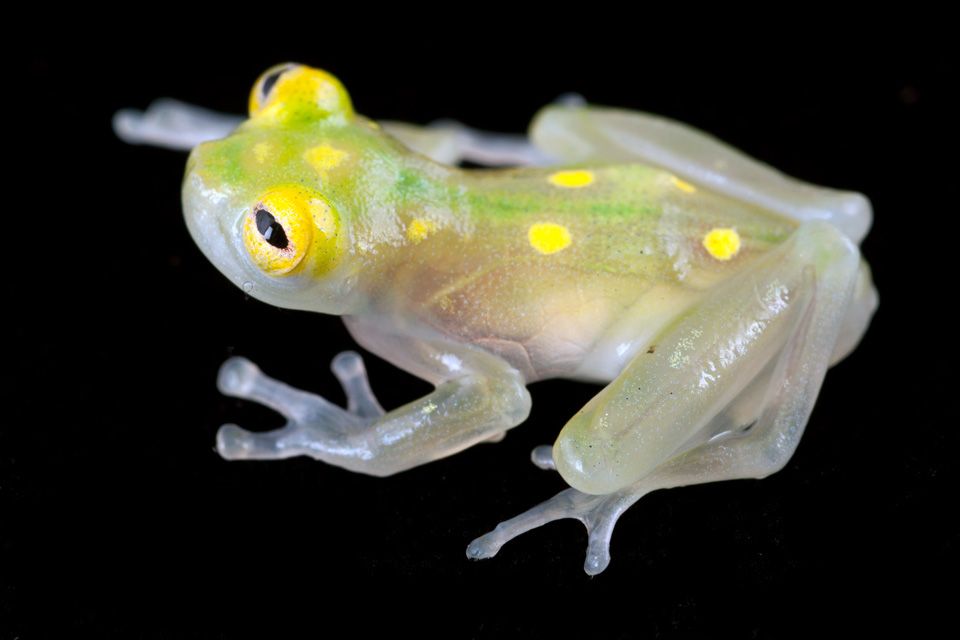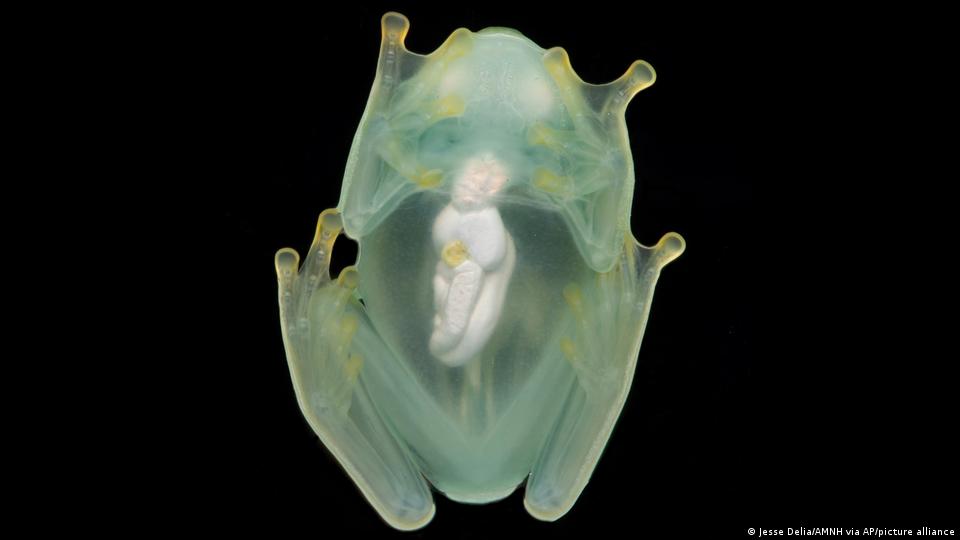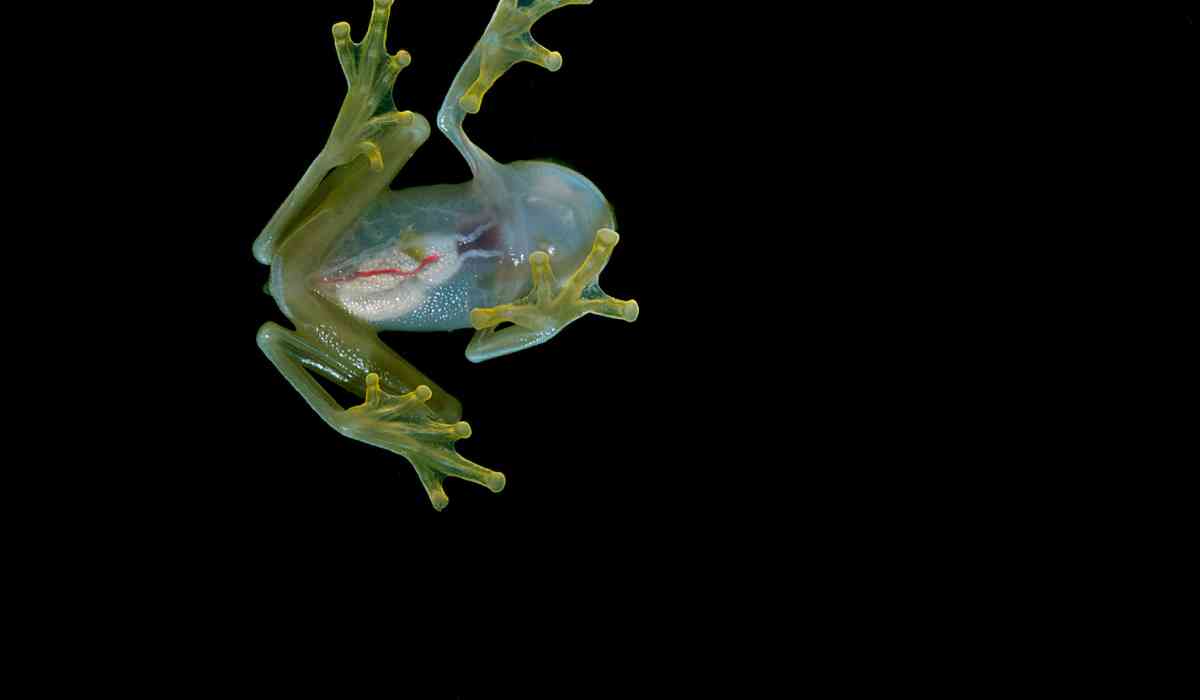The glass frogs are a group of small, tropical frogs known for their translucent skin, which allows their internal organs to be visible. These frogs are found in the tropical rainforests of Central and South America and are known for their unique appearance and behaviour.
Scientists have discovered that some species of glass frogs found in South and Central America have the rare ability to turn on and off their nearly transparent appearance. The frogs use their transparency as a form of security, and it is a complex form of camouflage.

This is achieved by the frogs packing up to 89% of their red blood cells into their reflective livers, almost doubling the size of the liver, and allowing the frog to become transparent.
The transparency of glass frogs is due to the presence of cells in their skin called chromatophores, which are responsible for producing and storing pigments. In most frogs, these cells contain pigments such as melanin, which gives the skin its color. In glass frogs, however, the chromatophores are largely absent or inactive, resulting in a transparent appearance.

When sunlight streams down from above and penetrates a translucent leaf, a blobby little frog could form a clear frog-shaped silhouette that would be invisible to predators.
In addition to the absence of chromatophores, the transparency of glass frogs is also due to the presence of specialized cells called iridophores, which are responsible for producing iridescent colours. These cells contain crystalized proteins called guanine, which reflect light and give the skin a shimmering, metallic appearance.
© Vygr Media Private Limited 2022. All Rights Reserved.
























